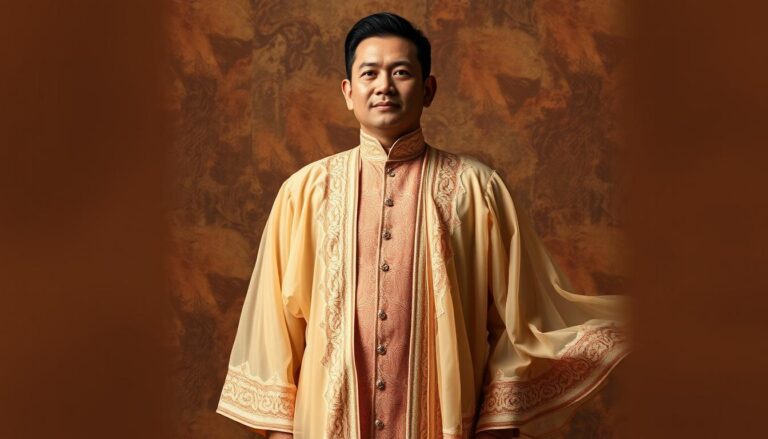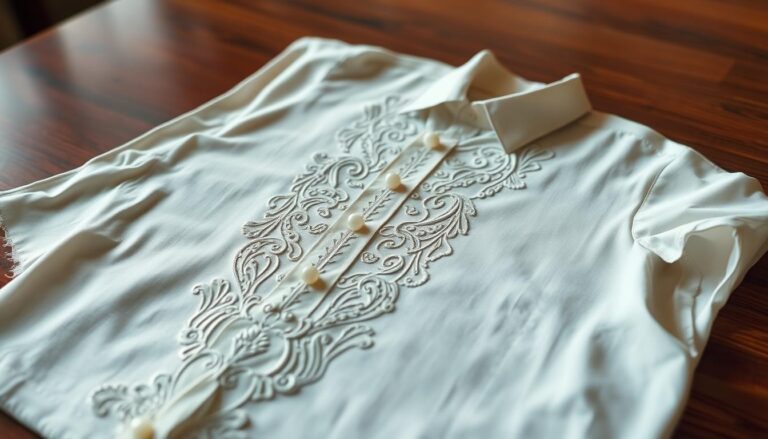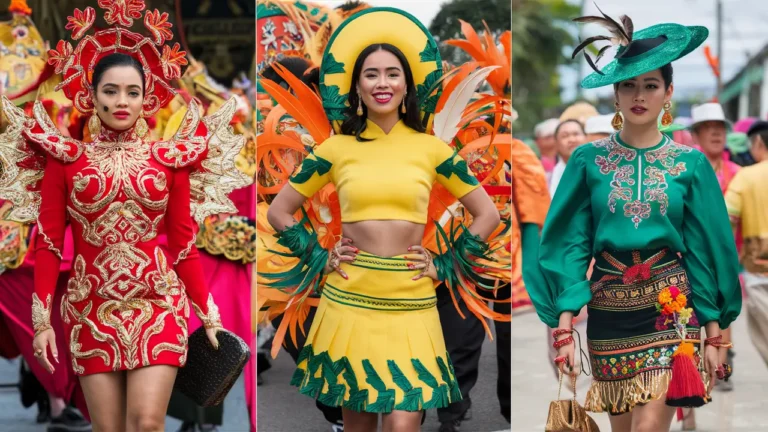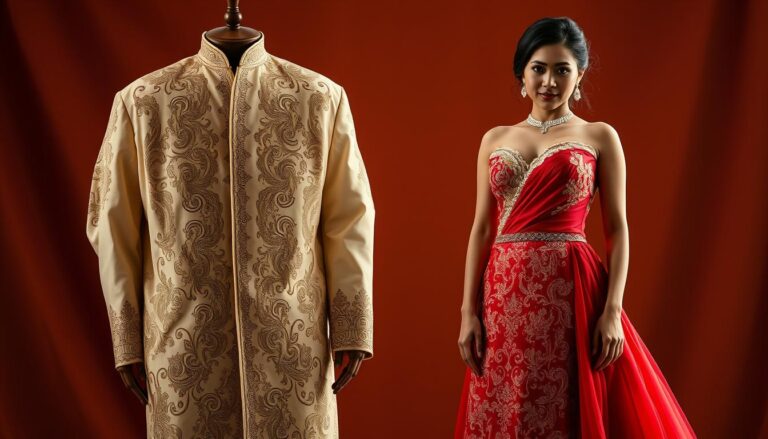Filipiniana Fashion Trends: What’s Hot

Traditional Filipino attire is having a major moment. Designers are reimagining classic silhouettes like the terno and baro’t saya, blending intricate craftsmanship with bold, modern twists. Think statement sleeves, luxe pineapple fiber fabrics, and fresh takes on embroidery that honor cultural heritage while appealing to today’s style-savvy women.
This year’s looks celebrate elegance without sacrificing versatility. From breezy jusi fabrics for daytime events to two-toned barong tagalog designs perfect for weddings, these garments bridge generations. The iconic butterfly sleeves—once a symbol of formal occasions—now appear in casual wraps and boleros, proving tradition can feel fresh.
What’s driving this revival? A new wave of designers like Narra Studio mixes ancestral techniques with minimalist cuts. Their work showcases how heritage details—delicate burda lacework or floral panuelo accents—elevate everyday outfits. Whether you’re dressing for a gala or a themed party, these styles offer timeless appeal with a contemporary edge.
Key Takeaways
- Classic butterfly sleeves and pineapple fiber fabrics dominate 2023 designs
- Modern interpretations of the terno dress work for both formal and casual occasions
- Brands like Narra Studio blend ancestral embroidery with minimalist silhouettes
- Two-toned barong tagalog styles add a playful twist to traditional menswear
- Lightweight jusi and binakul fabrics enhance comfort without sacrificing elegance
Introduction to the World of Filipiniana Fashion
Rooted in centuries of cultural exchange, traditional Philippine attire tells stories of resilience and identity. Early garments like the tapis (waist wrap) and baro’t saya (blouse-and-skirt combo) laid the foundation. Spanish colonization introduced delicate lace and structured silhouettes, blending with local weaving techniques.
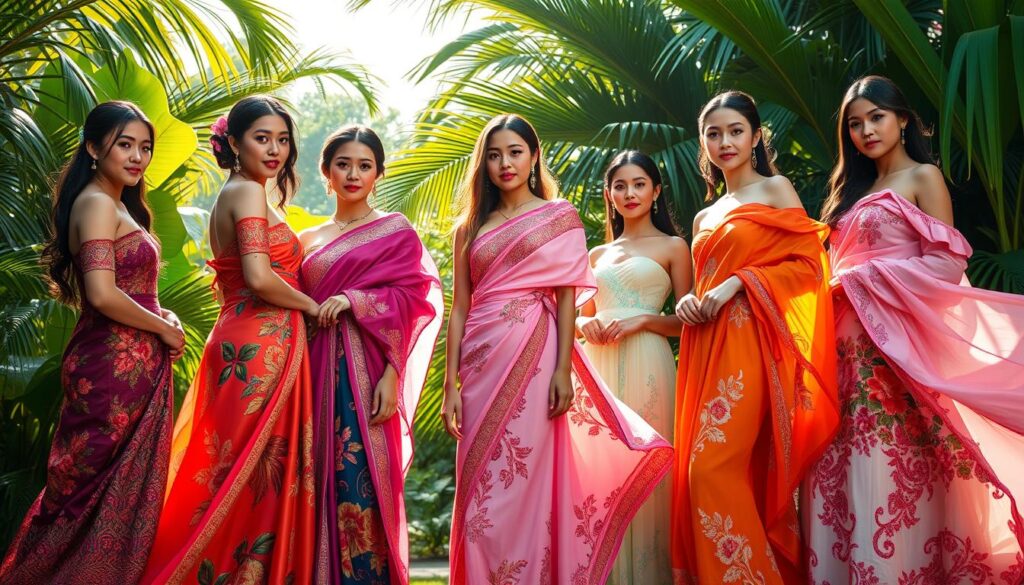
Understanding Traditional Roots and Heritage
Museum records show how 18th-century fabrics like handwoven piña (pineapple fiber) became status symbols. These materials carried patterns reflecting regional myths and Catholic influences. The barong tagalog, originally a sheer men’s shirt, evolved into formal wear through intricate embroidery.
Three elements define this heritage:
| Traditional Feature | Modern Adaptation | Cultural Purpose |
|---|---|---|
| Hand-stitched embroidery | Laser-cut patterns | Preserves craft techniques |
| Starched pañuelo | Convertible scarf drapes | Enhances versatility |
| Full bell sleeves | Asymmetrical cuts | Balances tradition & innovation |
Cultural Significance in Modern Society
Today’s designers rework historic designs for global audiences. Brands like Narra Studio transform the terno dress into office-ready sheaths. Social media fuels interest – #ModernFilipiniana has 48K posts showcasing updated attire at weddings or art galleries.
This style revival isn’t about nostalgia. It’s a conscious choice to honor cultural heritage while embracing progress. From boardrooms to red carpets, these garments prove tradition adapts without losing its soul.
Historical Evolution of Filipiniana Attire
The story of Philippine national dress spans centuries, shaped by trade, colonization, and cultural pride. Early garments prioritized practicality, while later styles blended foreign influences with local artistry.
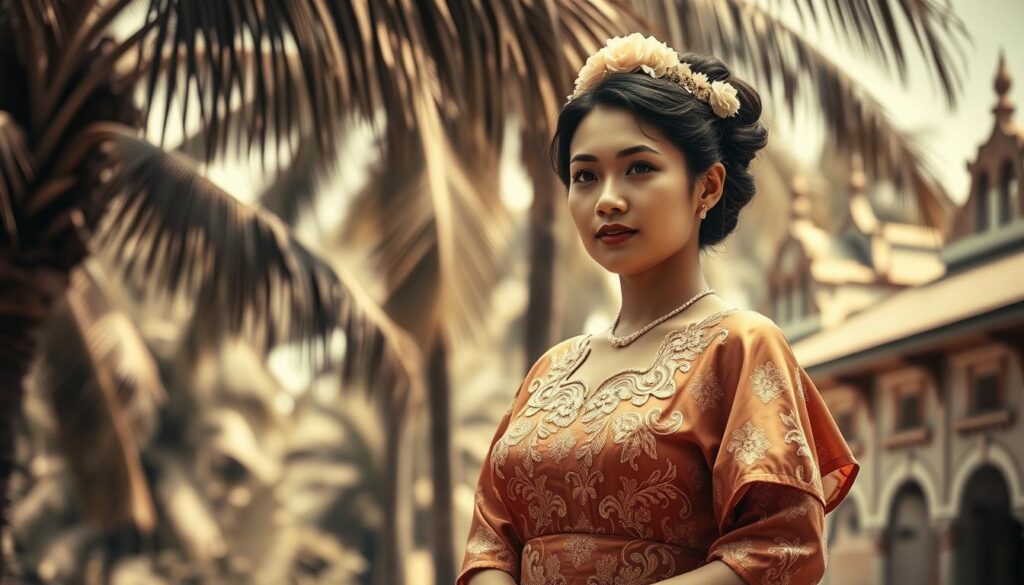
From Tapis to Baro’t Saya: A Timeline
Pre-colonial women wore the tapis—a woven cloth wrapped around the waist. Spanish arrival in the 1500s introduced tailored silhouettes. By the 1800s, the baro’t saya emerged: a blouse-and-skirt combo using delicate fabrics like pineapple fiber.
The 1890s saw the Maria Clara dress, named after Rizal’s heroine. Its camisa blouse and flared saya skirt became symbols of elegance. Museum records show how 1910s traje de mestiza designs added butterfly sleeves and slim trains, merging Spanish modesty with Western flair.
Influences of Spanish and Western Cultures
Colonial rule transformed garments through fabrics and techniques. Spanish friars promoted piña cloth for church vestments, elevating its status. American occupation in the 1900s brought simpler cuts, seen in the Balintawak—a casual baro’t saya variant.
| Spanish Influence | Western Adaptation | Impact |
|---|---|---|
| Bell sleeves | Asymmetrical hemlines | Modernized formalwear |
| Religious embroidery | Geometric patterns | Expressed cultural fusion |
| Layered skirts | Streamlined silhouettes | Increased daily wearability |
These shifts laid groundwork for today’s traditional filipiniana revivals. Designers now reinterpret historic details—like hand-stitched panuelo scarves—for modern filipiniana collections worn at global events.
Modern Adaptations in Filipiniana Fashion
Today’s designers are rewriting the rules of cultural attire with bold creativity. By merging ancestral patterns with sleek tailoring, they craft garments that honor history while fitting seamlessly into urban wardrobes. This movement thrives on balancing reverence for cultural heritage with experimental shapes and materials.
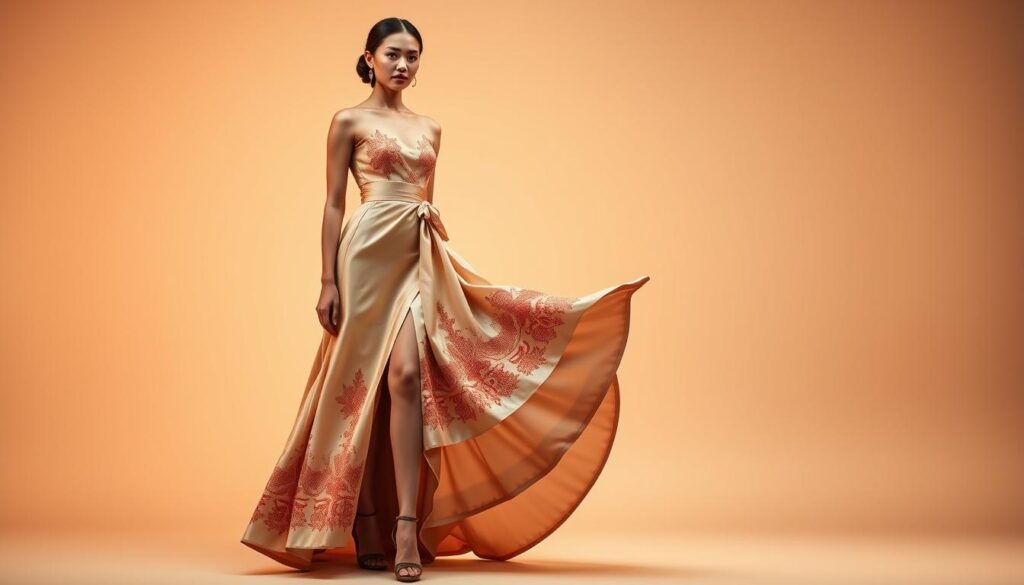
Mixing Tradition with Contemporary Design
Narra Studio’s latest collection demonstrates this fusion perfectly. Their asymmetrical terno dresses pair hand-stitched floral motifs with geometric cutouts, transforming ceremonial attire into gallery-ready statement pieces. One standout dress reimagines the baro’t saya skirt as a high-low hemline, pairing it with a cropped bolero jacket.
Innovative Fabrics and Silhouettes
Designers now layer pineapple fiber with breathable mesh for lightweight formalwear. The barong tagalog gets a modern twist through translucent sleeves and adjustable waist ties. These updates maintain symbolic elements like intricate calado embroidery while introducing convertible features.
| Traditional Element | Modern Update | Use Case |
|---|---|---|
| Butterfly sleeves | Detachable capes | Office-to-event versatility |
| Panuelo scarves | Convertible necklines | Daytime elegance |
| Full-length skirts | Slit designs | Red carpet moments |
Social media fuels this revival—#ModernFilipiniana looks regularly go viral when users share facebook posts of reinvented attire at art openings or beach weddings. These fresh styles prove tradition evolves without losing its soul.
Filipiniana Fashion Trends: Top Styles to Watch
Philippine heritage wear is making waves with fresh updates that honor tradition while embracing modern lifestyles. Designers now craft pieces that transition effortlessly from gallery openings to casual brunches, proving cultural attire can be both meaningful and wearable.
Modern Filipiniana Gowns and Attire
This season’s standout gowns rework classic shapes with bold flair. Narra Studio’s asymmetrical terno dresses feature laser-cut patterns inspired by ancestral embroidery, while VINTA Gallery offers sleek column dresses with detachable butterfly sleeves. These garments use lightweight piña-seda blends – a breathable mix of pineapple and silk fibers perfect for tropical climates.
Styles for Women and Men in Today’s Look
Contemporary barong tagalog designs break gender norms with cropped jackets and translucent details. Women’s collections showcase convertible alampay shawls that transform into statement necklines. For casual occasions, try pairing embroidered boleros with linen pants or jeans.
| Traditional Element | Modern Twist | Best For |
|---|---|---|
| Butterfly sleeves | Removable cape attachments | Office-to-event versatility |
| Hand-stitched lace | Geometric laser cuts | Gallery openings |
| Full-length skirts | High-low hemlines | Beach weddings |
Social media drives these trends viral – share Facebook posts of reinvented attire regularly rack up thousands of likes. From sustainable jusi fabric to reversible designs, today’s clothing celebrates cultural heritage through innovation that resonates globally.
Styling Tips and Wardrobe Essentials for Filipiniana Looks
Mastering the art of cultural dressing means balancing heritage details with personal flair. Whether dressing for parties or casual outings, these strategies help create polished outfits that celebrate tradition without sacrificing modern appeal.
Accessorizing with Heritage Pieces
Elevate your attire using ancestral jewelry like tambourine necklaces or woven belts. Pair a barong tagalog with geometric cuffs for contrast. For daytime looks, drape a lightweight alampay shawl as a headscarf or waist accent.
Choosing the Right Fit for Your Body Type
Opt for V-neck dresses to elongate torsos or A-line skirts to balance hips. Men can try cropped barong tagalog jackets with tapered pants. Brands now offer sizes up to 4XL, using stretchy jusi fabric for comfort.
| Body Type | Style Hack | Key Piece |
|---|---|---|
| Pear-shaped | Emphasize shoulders | Puffed-sleeve bolero |
| Rectangle | Define waist | Woven obi belt |
| Hourglass | Showcase curves | Wrap-style terno |
Maintain garments by hand-washing delicate piña-seda blends. For budget-friendly clothing, try reversible baro’t saya sets starting at $25. Mix embroidered tops with jeans for markets or pair full gowns with minimalist heels for galas.
Conclusion
Cultural threads weave through time, connecting ancestral craftsmanship to today’s runways. From structured baro’t saya to reimagined barong tagalog with translucent sleeves, these garments honor history while fitting modern lifestyles. Designers preserve elegance through butterfly sleeves and pineapple fiber blends, proving tradition evolves without losing its soul.
Key elements define current trends: convertible necklines adapt to casual parties, while high-low gowns blend grace with practicality. For men, cropped jackets refresh the classic barong. Choosing the right outfit means balancing heritage influence with personal style—whether emphasizing shoulders or selecting breathable clothing for tropical events.
This style revival isn’t just about dresses—it’s a way to celebrate identity. By mixing ancestral patterns with sleek cuts, wearers create unique statements that resonate globally. Share your modern interpretations using #CulturalThreads and join the conversation shaping tomorrow’s attire.


